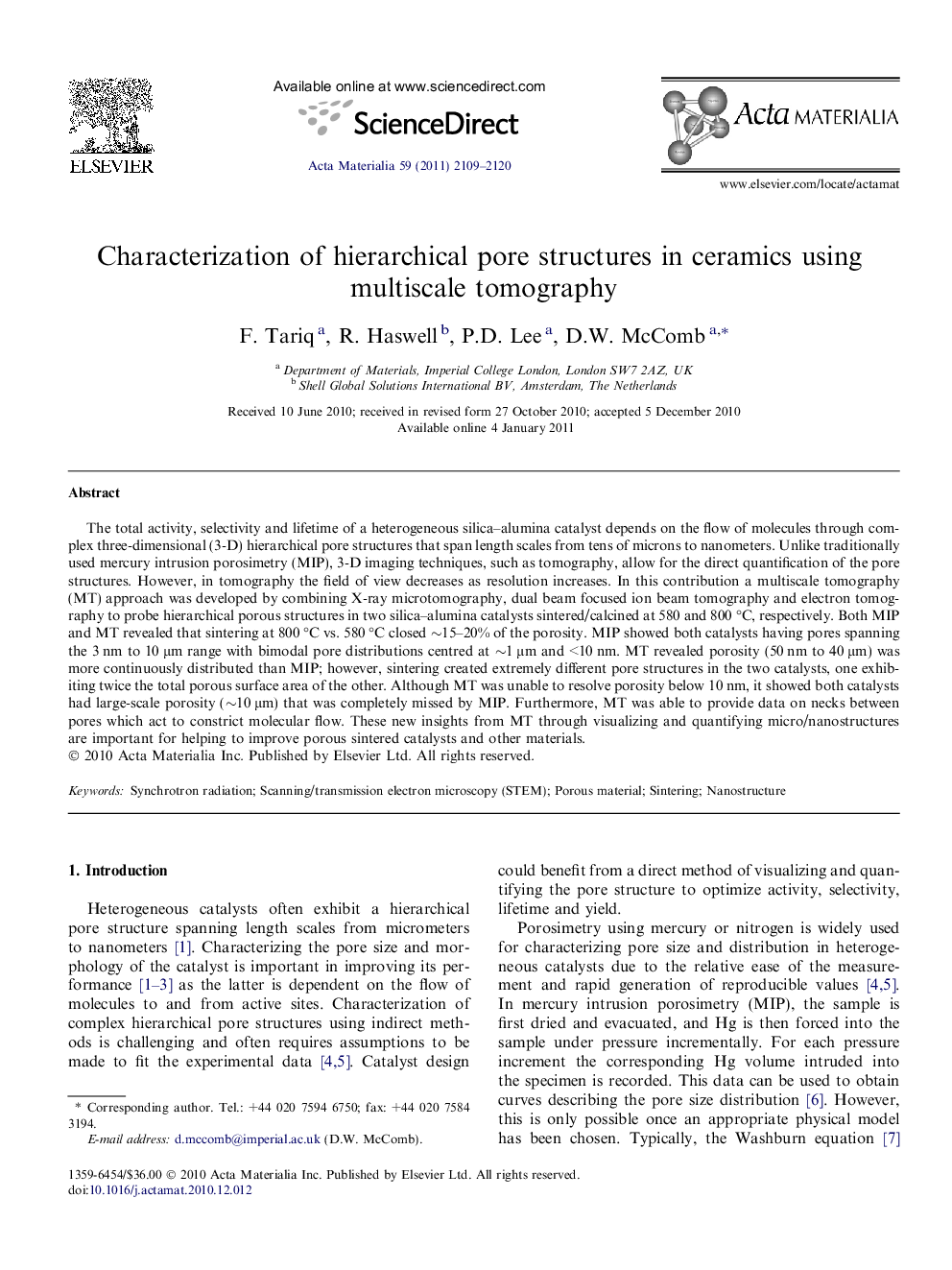| کد مقاله | کد نشریه | سال انتشار | مقاله انگلیسی | نسخه تمام متن |
|---|---|---|---|---|
| 1447544 | 988648 | 2011 | 12 صفحه PDF | دانلود رایگان |

The total activity, selectivity and lifetime of a heterogeneous silica–alumina catalyst depends on the flow of molecules through complex three-dimensional (3-D) hierarchical pore structures that span length scales from tens of microns to nanometers. Unlike traditionally used mercury intrusion porosimetry (MIP), 3-D imaging techniques, such as tomography, allow for the direct quantification of the pore structures. However, in tomography the field of view decreases as resolution increases. In this contribution a multiscale tomography (MT) approach was developed by combining X-ray microtomography, dual beam focused ion beam tomography and electron tomography to probe hierarchical porous structures in two silica–alumina catalysts sintered/calcined at 580 and 800 °C, respectively. Both MIP and MT revealed that sintering at 800 °C vs. 580 °C closed ∼15–20% of the porosity. MIP showed both catalysts having pores spanning the 3 nm to 10 μm range with bimodal pore distributions centred at ∼1 μm and <10 nm. MT revealed porosity (50 nm to 40 μm) was more continuously distributed than MIP; however, sintering created extremely different pore structures in the two catalysts, one exhibiting twice the total porous surface area of the other. Although MT was unable to resolve porosity below 10 nm, it showed both catalysts had large-scale porosity (∼10 μm) that was completely missed by MIP. Furthermore, MT was able to provide data on necks between pores which act to constrict molecular flow. These new insights from MT through visualizing and quantifying micro/nanostructures are important for helping to improve porous sintered catalysts and other materials.
Journal: Acta Materialia - Volume 59, Issue 5, March 2011, Pages 2109–2120